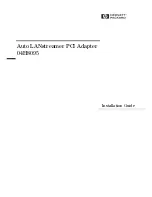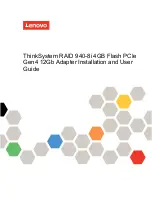
User's Guide
DIGI96/8 PRO © RME
24
16. Hotline - Troubleshooting
16.1 General
The newest information can always be found on our website
www.rme-audio.com
, section FAQ,
Latest Additions.
Playback works but recording doesn´t:
•
Check that a valid input signal is at hand. In this case the Error LED on the hardware turns
off, and the current sample frequency is shown under 'Settings'.
•
If you are sure that a valid signal is being sent but the LED is still red, then check the cur-
rently selected input in the Settings dialogue.
•
Check whether the
DIGI96/8 PRO
has been selected as recording device in the audio
application.
•
Check whether the sample frequency set in the audio application (‘Recording properties’ or
similar) matches the input signal.
•
Check that there is no loop cabling present. If so set 'Clock Mode' to 'Master'.
The input signal cannot be monitored in real-time
•
Monitoring has not been enabled (for example 'Global disable' in Cubase).
Only the playback signal, but not the record (input) signal is present at the output
•
The DIGI96 series has no hardware mixer. Therefore while playback is running only the
playback signal is present at the output. The mixing of record and playback signal has to be
done in the software (for example deactivate Cubase's 'ASIO Direct Monitoring').
The SPDIF output does not work
•
The output operates in ADAT Mode, see
Output Status Display
. This may be caused by
Force Adat being activated, an activation of more than the first (1/2) Master output busses in
Cubase, or when 'Max I/O' (under Hardware & Driver) wasn't set to 2 in Logic.
Low Latency ASIO operation under Windows 2000/XP on single CPU systems:
•
To use ASIO at lowest latencies under Windows 2000/XP even when only having one CPU,
the system performance has to be optimized for background tasks. Go to Control Pa-
nel/System/Advanced/Performance Options. Change the default 'Applications' to 'Back-
ground tasks'. The lowest usable latency will drop from 23 ms to around 3 ms. This is no is-
sue when using dual CPU systems.
The recording or the playback is disturbed by crackling:
•
Increase the quantity and size of the buffers in the software being used.
•
Use a different cable (coaxial or optical) to cross-check them for defects.
•
Check that there is no loop cabling present. If so set 'Clock Mode' to 'Master'.
•
In case of loop cabling with an ADAT we recommend to use the ADAT as master (Int) and
the DIGI as slave (AutoSync).
•
Increase the buffer size of the hard disk cache (example: from 64 kB to 256 kB).
•
Activate Busmaster mode for the hard disks. Windows: Device Manager, double-click on
‘Disk drives’, then on the required hard disk(s). Select ‘DMA’ in the Properties dialog.







































